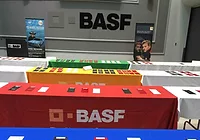European Union Gives Final Approval to Architectural, Refinish Coatings VOC Rule
The new regulation will impose VOC limits on 17 categories of paints, varnishes and coatings, with separate limits specified for waterborne and solventborne architectural products.
The limits for key product types include: 75 grams/liter for waterborne interior flat wall paints and 400 g/l for solventborne flat wall paints; 150 g/l for waterborne interior wall paints (400 g/l for high-gloss solventbornes); 150 g/l for waterborne interior/exterior trim and cladding paints (400 g/l for solventbornes); and 75 g/l for waterborne exterior paints for mineral substrates (450 g/l for solventbornes). Other limits range from a low of 50 g/l for waterborne primers to a high of 750 g/l for binding primers.
The VOC limits for architectural paints and varnishes will go even lower on Jan. 1, 2010, with 30 g/l maximums scheduled to go into effect for waterborne and solventborne interior flat coatings, primers and binding primers, and a 40 g/l limit specified for exterior paints for mineral substrates.
The regulation includes one round of VOC limits for refinish products, with those limits ranging from 250 g/l to 850 g/l for preparatory and cleaning products, bodyfillers/stoppers, primers, topcoats and special finishes. Those limits will go into effect on Jan. 1, 2007.
The complete regulation, including definitions, reporting rules and other requirements, can be obtained from the following European Commission website link:
http://www.europarl.eu.int/commonpositions/2004/pdf/c5-0019-04_en.pdf.
The EU says the regulation will reduce VOC emissions from paints, varnishes and vehicle-refinish products in EU member states by around 280,000 tons per year by 2010.
Looking for a reprint of this article?
From high-res PDFs to custom plaques, order your copy today!




